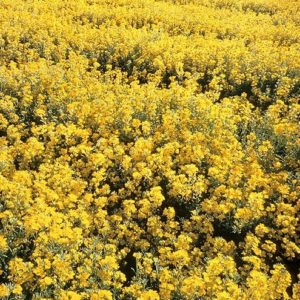 Scientists at USDA’s Agricultural Research Service (ARS) are studying a plant in the mustard family as a source for making butanol. It’s scientific name is Lesquerella, but it is often called Fendler’s bladderpod and Yellow Top, a plant native to the U.S. Southwest.
Scientists at USDA’s Agricultural Research Service (ARS) are studying a plant in the mustard family as a source for making butanol. It’s scientific name is Lesquerella, but it is often called Fendler’s bladderpod and Yellow Top, a plant native to the U.S. Southwest.
Butanol is a cleaner-burning alternative to gasoline that was produced worldwide until after World War II, when making this fuel from petroleum sources proved more efficient than fermenting it from corn and molasses.
Now, using the latest advances in fermentation and product-recovery technology, a team at ARS’ National Center for Agricultural Utilization Research in Peoria, Illinois, hopes to rekindle the production of butanol as a biobased fuel, among other groups.
Towards that end, they’ve conducted research to expand the list of butanol feedstocks that can be used—from fiber-rich crop residues like wheat straw, sweet sorghum bagasse and corn stover, to food wastes and processing byproducts like dried distillers grains and solubles and “presscake” (the crushed remains of lesquerella seed whose oil has been extracted).

